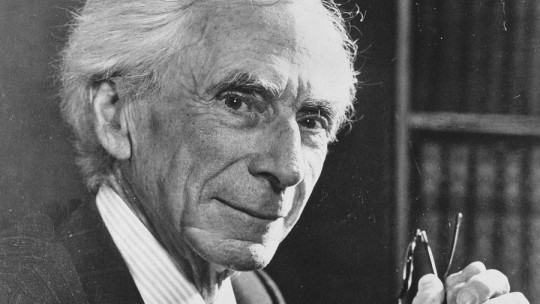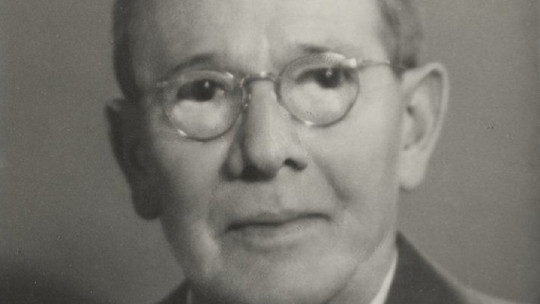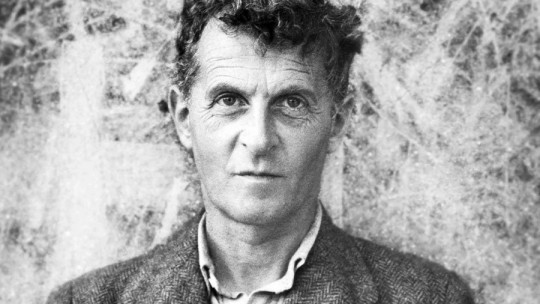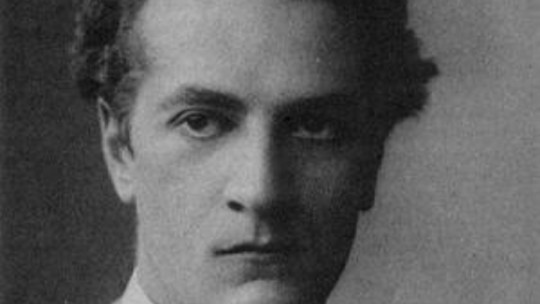Alfred North Whitehead’s professional career began as a mathematician, with the publication of the Principia Mathematicathe colossal work in three volumes that he wrote with his former student Bertrand Rusell and that represented a milestone in the literature on this science.
However, his extraordinary intelligence and restlessness soon led him towards philosophy, especially towards the field of metaphysics, where he also stood out as one of the most brilliant thinkers of the 20th century.
Today We will learn about the life of Alfred North Whitehead and the contributions he made to mathematics and philosophy
Brief biography of Alfred North Whitehead, mathematician and philosopher
He was born in an England shaken by the Second Industrial Revolution and head of an empire that extended to India. Whitehead came into the world in a family very interested in education, since his father was a teacher at the school that Thomas, Alfred’s grandfather, had founded at the beginning of the 19th century. In short, little Whitehead had teaching in his veins.
And, indeed, he made his living as a professor in several of the most prestigious centers in the world: Trinity College in Cambridge, University College in London and Harvard University in the United States were the main venues where he presented his interesting works. and often difficult ideas.
Passion for mathematics
Whitehead already stood out in his primary education years as a child of extraordinary intelligence and talent. We have already mentioned that he came from a family of teachers; His father, Alfred Whitehead, taught children who attended the school that his grandfather Thomas had founded, Chatham House Academy, in Kent, England. In his writings, and according to Whitehead’s main biographer, Victor Lowe (see bibliography), the future mathematician fondly remembers both his father and his grandfather, two people who, according to him, had been tremendously successful and educated.
He does not dedicate the same memories to his mother, Maria Sarah Whitehead (née Buckmaster). In fact, he does not mention her in any of her texts, which has led some scholars to believe that Alfred North had a bad relationship with her. However, it must be taken into account that, before she died, Whitehead ordered those close to her to destroy all of her papers once she died, so many of her documents have not survived.
We do know that he studied in Sherborne, Dorset, in one of the best public schools in the country, where he stood out especially for his skills in sports and mathematics. His passion for the pure sciences would accompany him throughout his life, because in 1880 he enrolled at Trinity College to study for a degree in mathematics, which degree he obtained in 1884, in addition to excelling as a fourth wrangler of the University.
The wranglers They were the Trinity students who had received special mentions during the third year of their studies, which gives us an idea of the mathematical and logical abilities of the young Whitehead.
In 1910, together with a former student of his (none other than the mathematician Betrand Russell), he began an ambitious project: the Principia Mathematica , whose mission was to put in writing the set of axioms by which mathematics can be proven. To illustrate the complexity of the work (which ultimately consisted of three volumes of more than 2,000 pages), we will say that Whitehead and Russell dedicated the entire first volume and part of the second to demonstrating through axioms and rules that, indeed, 1+1= 2.
The Principia Mathematica It was a work that was too ambitious and its audience was excessively restricted, since it was only understandable to specialists in mathematics As expected, the book (or books, rather), which they had dedicated no less than three years to writing, brought heavy losses to the authors. In any case, the Principia Mathematica by Whitehead and Russell has emerged as one of the essential monuments in the field of pure sciences, which marked the beginning of an unstoppable professional career.
Metaphysical issues
But Whitehead’s restless mind was not going to stop at mathematics, even though it was a perfect field for his razor-sharp intelligence. He had always felt deeply attracted to philosophy and metaphysical questions, but his limited training in this regard had caused Whitehead to leave these disciplines aside and opt for the pure sciences, his true specialty.
But, despite his basic education in philosophy, Whitehead entered the first decades of the 20th century into the slippery terrain of metaphysics, which he was passionate about. In 1920 he published his first work on the subject, The concept of Nature (The Concept of Nature), whose enormous success gave him access to the presidency of the Aristotelian Society, a position he held between 1922 and 1923. Whitehead’s philosophy is not only different, but also complicated and obscure , which is still curious in a man who considered himself an amateur in this field. Be that as it may, the success of his work led, in 1924, to Harvard University to invite him to teach philosophy classes at its faculty, a position that he would hold until 1937, the year in which he would definitively retire from teaching.
What is Whitehead’s metaphysics? Why does it have a reputation for being so complex? In Process and realitypublished in 1929 and considered by some to be the “most impressive text on metaphysics of the 20th century,” Whitehead questions the foundations on which the concept of the universe and its functioning are based.
According to Whitehead, the main problem of Western metaphysics is that it considers matter as something “irreducible.” , as an entity that exists independently of others, even though they have external contact with each other. But for the philosopher, nothing is the same over time and everything is in constant flux, so change is essential in the functioning of the universe.
Thus, Whitehead is against scientific materialism, which sees things differentiated from each other, when in reality objects are just a set of interrelationships with other objects and with the world, which he calls “process.” In other words, entities are fluid and constantly changing, and the only thing that can give them any permanence, Whitehead adds, is God.
Education as a goal
In addition to the fields of mathematics and metaphysics, Alfred North Whitehead stood out in his efforts to improve the educational system of the United Kingdom, evidently infected by his family’s vocation. In 1929, parallel to his masterpiece on metaphysics, the prolific author publishes The Aim of Education and Other Essayswhere he summarizes his ideas of what a good education should be : The most important thing is that students manage to establish connections between the various subjects that traditional education considers independent of each other.
Whitehead’s efforts to achieve reform in the educational system earned him the call of the then British Prime Minister, David Lloyd George, to be part of a committee that sought to analyze the situation of education in the United Kingdom.
Since he was called to Harvard in 1924, Whitehead and his wife, Evelyn, would no longer leave the United States. Some years earlier they had had the misfortune of losing one of his sons, Eric, who at only nineteen years old had died in service in the First World War. The couple had two other children, Thomas North and Jessie, the only girl.
Whitehead died in 1947, but his legacy reaches our time In recent years, interest in the prolific work of this mathematician and philosopher has grown enormously, and it has been applied in multiple and varied fields, such as biology, theology, ecology, economics and psychology.









